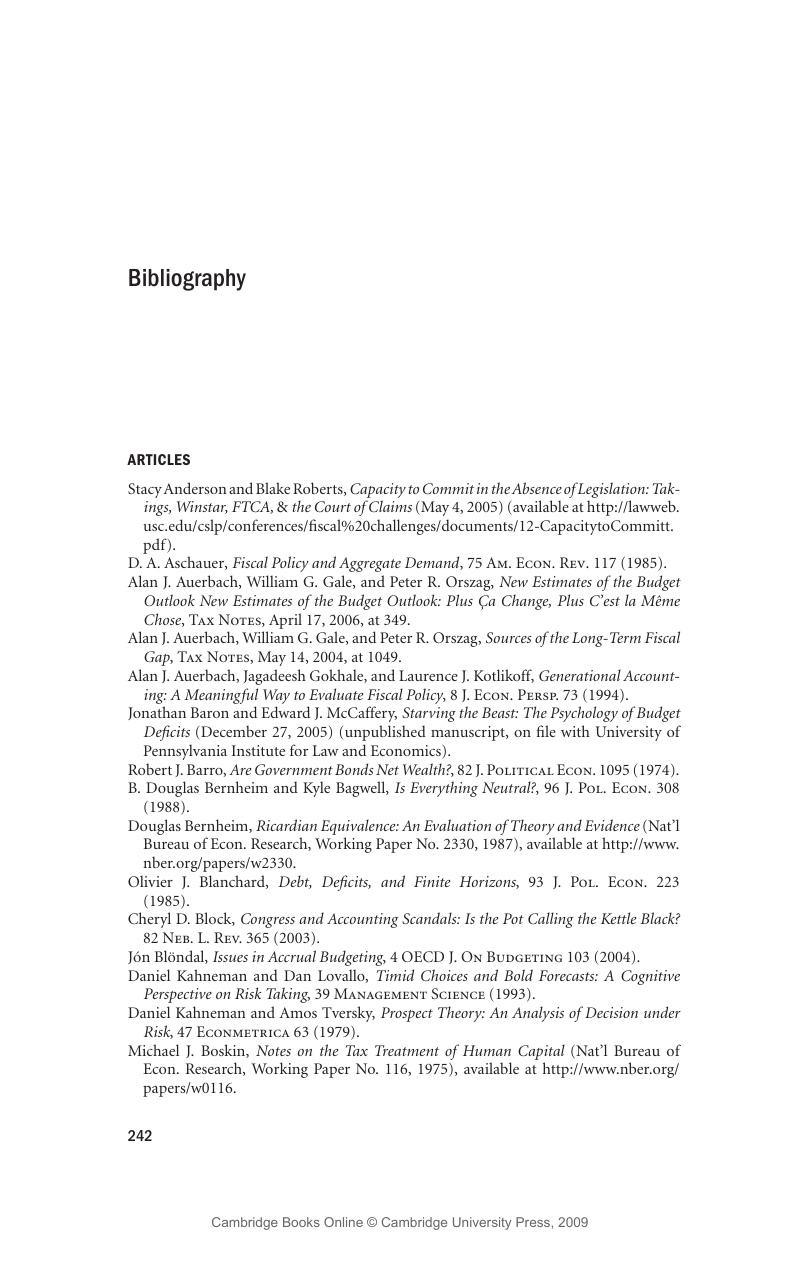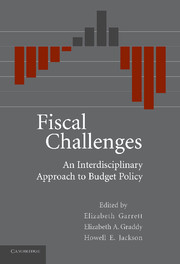Book contents
- Frontmatter
- Contents
- Preface
- Contributors
- PART ONE THE LAW AND POLITICS OF FISCAL POLICY
- PART TWO UNDERSTANDING FEDERAL DEFICITS AND PUBLIC DEBT
- 5 Economic Perspectives on Federal Deficits and Debt
- 6 Counting the Ways: The Structure of Federal Spending
- 7 Starving the Beast: The Political Psychology of Budget Deficits
- Part Two Bibliography
- PART THREE BUDGETING AND FISCAL CONSTRAINTS AT THE STATE LEVEL
- PART FOUR INTERGOVERNMENTAL ASPECTS OF BUDGET POLICY
- PART FIVE JUDICIAL POWERS AND BUDGET POLICY
- Index
- References
Part Two Bibliography
Published online by Cambridge University Press: 23 December 2009
- Frontmatter
- Contents
- Preface
- Contributors
- PART ONE THE LAW AND POLITICS OF FISCAL POLICY
- PART TWO UNDERSTANDING FEDERAL DEFICITS AND PUBLIC DEBT
- 5 Economic Perspectives on Federal Deficits and Debt
- 6 Counting the Ways: The Structure of Federal Spending
- 7 Starving the Beast: The Political Psychology of Budget Deficits
- Part Two Bibliography
- PART THREE BUDGETING AND FISCAL CONSTRAINTS AT THE STATE LEVEL
- PART FOUR INTERGOVERNMENTAL ASPECTS OF BUDGET POLICY
- PART FIVE JUDICIAL POWERS AND BUDGET POLICY
- Index
- References
Summary

- Type
- Chapter
- Information
- Fiscal ChallengesAn Interdisciplinary Approach to Budget Policy, pp. 242 - 248Publisher: Cambridge University PressPrint publication year: 2008

